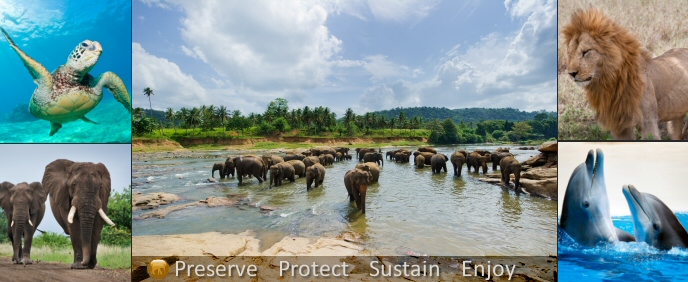
Eco Tours in Hawaii - Sustainable Tourism & Conservation Laws
The Endangered Species Act of 1973 has been instrumental in preserving the unique environment of the State of Hawaii. According to FEMA, there are over 329 species there that are on the list of the ESA. Species, such as the Hawaiian hoary bat and the Hawaiian Hawk, occur only in or around this island paradise.
Most people, when they think of the State of Hawaii, think only of a few of the major islands of that state. However, that state encompasses several hundred islands that cover approximately 1,500 miles. It is situated southwest of the mainland of the U.S. in the Pacific Ocean and is part of the Polynesian islands. The state's population is around one million.
With the coastline almost as long as California's, there are many species in and around this coast that are protected, such as the Hawaiian Duck and the Hawaiian Goose. All the islands that comprise the State of Hawaii were formed by volcanoes. The active volcanoes are a favorite of scientists, but the volcanoes wreak much havoc on these islands. Since this is also a location subject to earthquakes, islanders are always alert to tremors from below the ocean. No location in the state is more than 28 miles from a coast line.
The Economy versus the Ecology
Controversy continues to affect both the government and the citizens because tourism is their main revenue-generator. They are trying to achieve a balance between keeping the economy growing, keeping the tourism industry growing and keeping the environment safe. This is a full-time job because over seven million tourists visit this state annually. Ecotourism will help to make this achievable. Its adherents want to protect the environment, promote the natural culture of each location, enhance the economy through tourism and encourage tourists to visit that location.
Can a Balance Be Achieved?
The Hawaii Ecotourism Association and the Hawaii 2050 Sustainability Task Force are two organizations that promote safe tourism. One concern is potable water. With so much water surrounding this island state, Hawaiians are still seeing their potable water resource diminish at a startling rate. Encouraging ecotourism will help alleviate many of the concerns.
Hawaiian Attractions
There are many attractions to woo the ecotourist to Hawaii:
Burial sites are very interesting to people seeking to know the culture of Hawaii. Safely protecting burial sites and other sacred sites from damage by tourists has become part of the activities of the State Office of Hawaiian Affairs.
Another favorite tourist attraction is at Oahu where there is a site for viewing the Arizona, a ship that was bombed during the attack on Pearl Harbor. The Arizona lies deep in the water entombing all aboard at the time of the attack. Building a staging area and adding guides to this tourist site has helped protect it.
An exciting tour can be arranged to view the most active volcano in the world. That is the volcano Mt. Kilauea on the island of Hawaii, known as the Big Island. The abundance of lush vegetation and clean beaches on this island will also enrich a Hawaiian vacation.
Rich in the native culture, visiting and touring the island of Kauai is a favorite of ecotourists. It is the oldest island of all the islands. It is also a favorite because it has the Waimea Canyon, known as the Pacific Grand Canyon. Landing on Oahu, it is easy to set up a side tour of Kauai.
Walking the pristine beaches of this island paradise is a favorite tourist activity. Attractive to the eye are the colonies of light pink coral. Coral is very delicate and is actually tiny living animals but has sharp edges that may cut a person's feet. Protecting the coral reefs that offer habitat to a wide variety of ocean life is a great concern.
Explicit Restrictions
Importing foreign plant or animal life into this paradise may spoil it for others. The Department of Agriculture for the State of Hawaii lists many species that cannot be imported. Hummingbirds are on that list for a good reason. Importing hummingbirds could spoil the pineapple crop. Their beaks are long enough to pollinate the pineapple plant.

